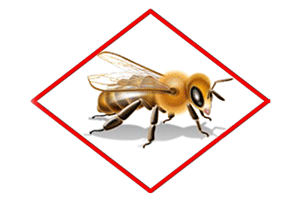
23 Aug EPA bee-protective labels don’t cut it
Last week, the Environmental Protection Agency (EPA) announced new labels intended to better protect bees from neonicotinoid pesticides. While seemingly a move in the right direction — and explicit acknowledgement from the agency that neonics indeed pose a threat to bee populations — these labels fail to establish truly meaningful protections.
There is no clear path for enforcing EPA’s new labels. And even if followed to the letter, the labels fail to address a primary route of exposure through pre-treated seeds. Neonics are systemic, permeating the plant (including pollen and nectar), and are commonly applied as seed coatings to widely planted crops like corn. In short, EPA’s labels appear to be an empty gesture.
As Paul Towers, PAN’s media and organizing director, said:
“While it’s good to see movement from EPA, the new labels do little to address the problem of bee declines. EPA’s labels fail to acknowledge the unique properties of systemic, persistent neonicotinoid pesticides and are practically unenforceable.”
Based on scientific findings, the European Union has implemented measures to remove bee-toxic products from the market. Instead of taking decisive action similar to policymakers across the pond, EPA is offering toothless regulation. And, Towers notes,
“EPA’s efforts will only make matters worse by giving a false sense of acceptability for the use of these bee-harming products.”
Even at low levels, neonicotinoids threaten bee health. Studies show that extremely low dose exposures to the systemic pesticides undermine immunity — rendering honey bees more susceptible to common pathogens.
EPA feeling the heat?
There is mounting pressure on EPA to protect bees from harmful pesticides. Millions of concerned citizens have petitioned the agency, as have beekeepers facing unprecedented colony losses. And along with PAN, advocacy organizations have put legal pressure on EPA to take decisive action in response to the “imminent hazard” posed by neonics.
Congress is even engaging on the issue, with Representatives Conyers (D-MI) and Blumenauer (D-OR) recently introducing the “Save America’s Pollinators Act.” Similar to the E.U. policy, this bill would remove common neonics from the market until proven safe for pollinators.
To date, the agency has been unresponsive to all appeals; its current review of neonics is still scheduled to complete in 2018. But perhaps the new pesticide labels are a sign that mounting public pressure is having an impact on EPA. We just wish that instead of unenforceable, symbolic gestures, the agency would take decisive action. Bees need real protection from harmful pesticides, and they need protection now.
Take action » Tell EPA’s new leader, Gina McCarthy, to make pollinator protection a priority! With beekeepers reporting losses of 40-70% this past season, it’s clear bees can’t wait.

